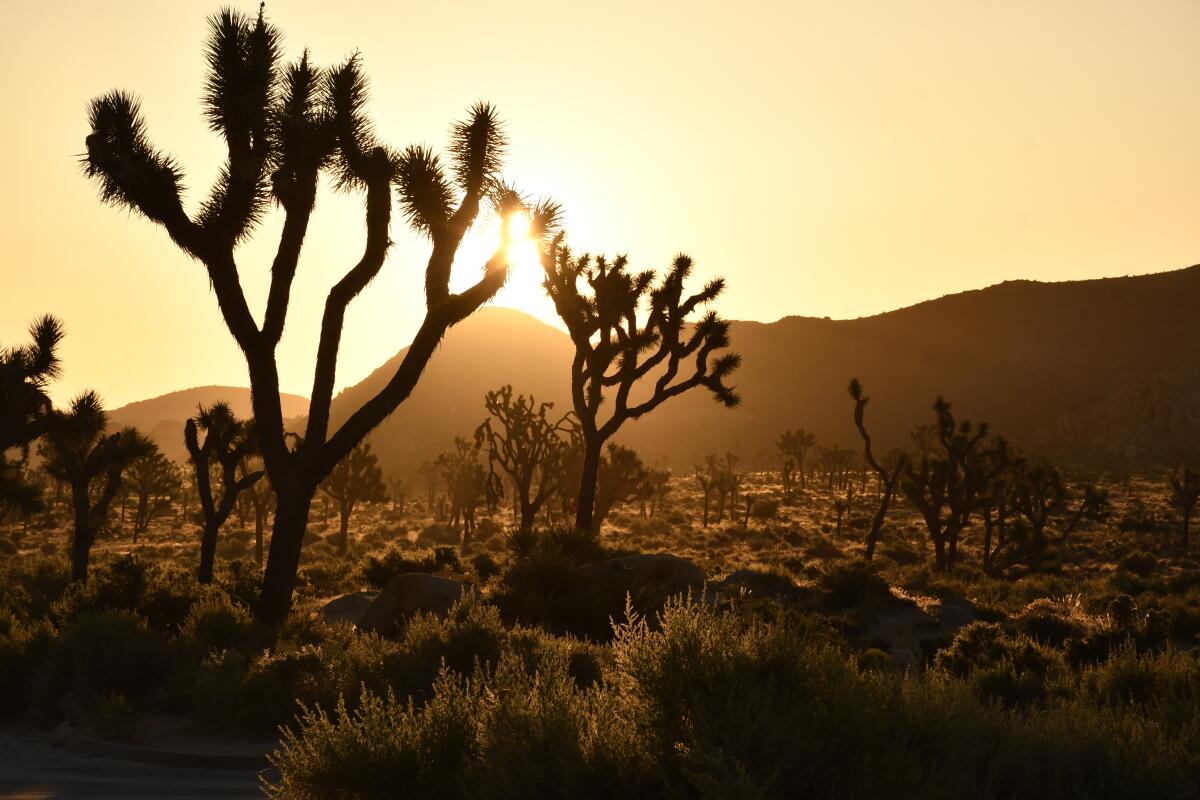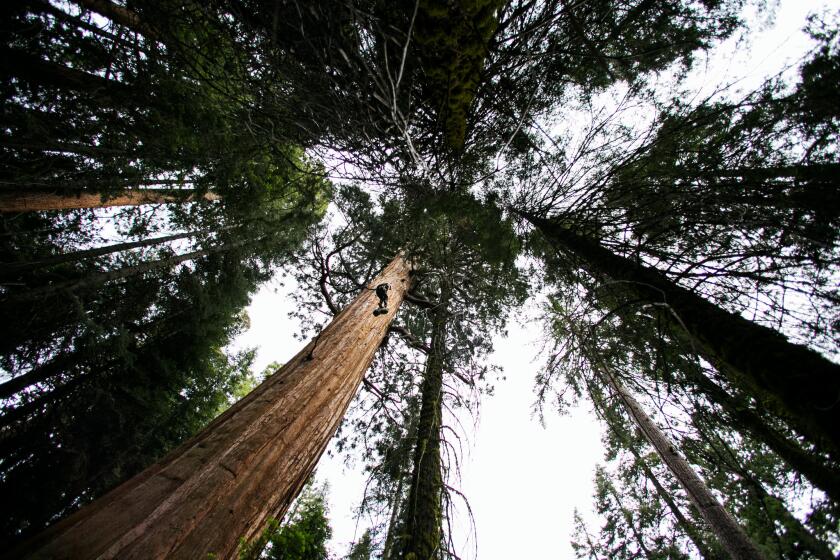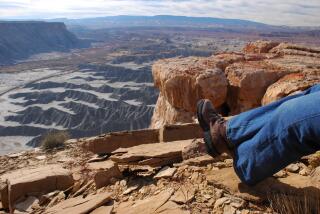Op-Ed: We’ll have to sacrifice Joshua trees to save them

- Share via
Joshua trees, the tall, twisty succulents that mark the Mojave Desert, are survivors.
Unlike coast redwoods or giant sequoias, they largely escaped harvesting and habitat losses when Europeans colonized their home. They flourished, in fact, until the last decades of the 20th century brought sprawling development and a changing climate.
Three weeks ago, a federal court ruled that the U.S. Fish and Wildlife Service underestimated these threats in a 2019 assessment, and must reconsider Joshua trees for protection under the Endangered Species Act. That protection would be a first step toward securing the trees’ future, but only a first step.
Today, Joshua trees are ensnared in a tangle of interlocking threats. Models of future climates show that 90% or more of the trees’ current habitat will be unsuitable by the end of this century. In the hotter, drier parts of the Mojave, seedling Joshua trees are already a rare sight. More mobile animal and plant species have already begun to shift to cooler and wetter portions of their ranges, but not only are Joshua trees rooted in the ground, their seeds are inefficiently dispersed by desert rodents. Given that the trees take decades to grow to reproductive age, and their capacity for movement is at most a few hundred yards a generation, they cannot hope to outpace climate change.
There are Joshua tree stands where climates could stay suitable even 80 years from now — “climate refugia,” they’re called. Unfortunately, not all refugia are on protected lands, and even a climate refuge inside a national park is not secure against the increasing frequency of wildfire across the Mojave. The cooler conditions that define refugia are also more suitable for certain grasses, which create a carpet of vegetation to fuel fires, and droughts supercharged by climate change ensure that this vegetation carpet is tinder-dry.
There are refugia in the higher elevations of Joshua Tree National Park, but up to half of them have burned in recent decades. Another likely refuge was decimated by last year’s Cima Dome fire in the Mojave National Preserve, which incinerated as many as a million Joshua trees. Restoring populations after these losses will take decades.
Joshua trees are also threatened by expanding urban areas — the Antelope Valley cities of Lancaster, Palmdale and Victorville have quintupled in population since 1980 — and by the development that comes with mining and with wind and solar power generation.
The Bureau of Land Management is considering a proposal for mining exploration near Conglomerate Mesa, a possible climate refuge with extensive Joshua tree woodlands. The Mojave is also slated for intensive solar energy development to address the wider threat of climate change. The federal government’s Desert Renewable Energy and Conservation Plan designated 600 square miles of the Mojave for energy development, and by one estimate, the state of California would need to fill most of that space with solar farms to achieve its planned carbon emission reductions.
Amid the worst fire season on record, Californians have to learn to take the long view.
Many of these farms can be built without compromising pristine Joshua tree habitat, but there is no doubt that the scale of development needed to bring climate change under control will be enormous. Ironically, building the renewable energy capacity we desperately need to avert more severe climate change may be, in some cases, in direct conflict with Joshua trees’ capacity to survive climate change.
With climate catastrophe now a fact of daily life, we must act urgently to find and protect the Joshua tree populations best equipped to survive. Fighting to save every last Joshua tree will not only be futile; it also risks wasting time, resources, invaluable social capital and political goodwill.
Our best hope is to focus on protecting places where Joshua trees still have a fighting chance — but we do not yet have the data we need to identify those places with confidence.
To decide which Joshua trees need focused protections, we must dramatically improve our collection of on-the-ground information about the health of Joshua tree populations across the Mojave: which ones are successfully growing new seedlings and which are faltering. We also need genetic data of a quality that has rarely been gathered in other threatened species, to pinpoint gene variants that allow Joshua trees to weather the harshest conditions. Populations that already harbor those variants may become high priority for protection.
We could also replant burned areas in climate refugia with seeds genetically calibrated to survive warmer, drier conditions, or even supplement failing populations with seeds transplanted from their more robust kin.
The people who live in and enjoy the wild landscapes of the Mojave must be partners in this effort, from data collection to decision-making. The tribal, state and local governments that oversee much of the private land in the region must be included in the development of any plans to steward its most distinctive tree, and those plans will be far more successful with the input and support of the people who call the desert home.
None of this will be easy. It would be far simpler to declare every tree sacred and be done. That approach, however, would fail to harness the resilience that lies within Joshua tree populations — and it could jeopardize the broader fight against climate change. Joshua trees are a case study in the tangle of trade-offs we must make to protect biodiversity on a warming planet. With care and perspective, they could become a model for how we solve these dilemmas.
Jeremy B. Yoder is an assistant professor of biology at Cal State Northridge. Christopher Smith is a professor of biology at Willamette University. Cameron W. Barrows is a research ecologist with the UC Riverside Center for Conservation Biology.
More to Read
A cure for the common opinion
Get thought-provoking perspectives with our weekly newsletter.
You may occasionally receive promotional content from the Los Angeles Times.











